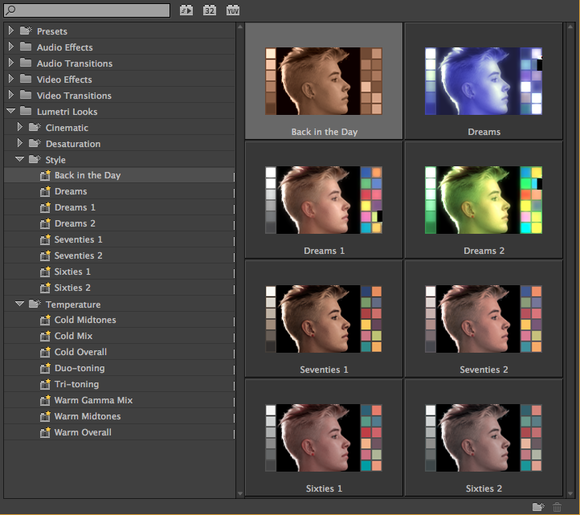Premiere Pro CC, the newest version of Adobe’s pro-level video-editing application, gets a slew of modest tweaks as it migrates to the cloud along with its fellow Creative Cloud suite mates. It’s not a ground-up overhaul, and it doesn’t incorporate hot new technologies. But these tweaks indicate that Premiere Pro has taken on some of the characteristics of a cloud application, adding features as they are developed, rather than making customers wait for monolithic annual releases.
 Premiere Pro CC’s interface is more stuffed than ever, but confining things to tabs helps manage it all.
Premiere Pro CC’s interface is more stuffed than ever, but confining things to tabs helps manage it all.
SpeedGrade gets good grades
One of Premiere Pro CC’s new features is the addition of the Lumetri color engine from Adobe SpeedGrade, a sophisticated GPU-accelerated color-grading/correction application that debuted in Creative Suite 6. In Premiere Pro CC’s effects browser, you’ll see four sets of Lumetri “looks” (Cinematic, Desaturation, Style, and Temperature), and as with any video effect, you can drag a look onto a clip in the timeline, or onto an adjustment layer that covers multiple clips.
If you never venture into SpeedGrade, then the Lumetri looks are just a few more effects added to the vast selection that Premiere Pro provides. But if you do use SpeedGrade, you can use that application to create and save new looks, which you can then import into Premiere Pro CC and apply over and over again, perhaps as part of implementing a consistent brand identity. However, the path to Lumetri is one-way—you cannot create or modify looks from within Premiere Pro. You must use SpeedGrade and then import into Premiere Pro.
 The new Lumetri “looks” are created in Adobe SpeedGrade and then pulled into Premiere Pro CC as effects.
The new Lumetri “looks” are created in Adobe SpeedGrade and then pulled into Premiere Pro CC as effects.
Another cool new toy, the Loudness Radar, will be very useful for broadcast TV thanks to the Commercial Advertisement Loudness Mitigation (CALM) Act, which mandates limits on differences in volume. If you enable the Loudness Radar and then play your timeline, the Loudness Radar will show you a visual representation of its loudness over time, with peaks and valleys on a circular graph. You can then use other controls to keep your volume within legally acceptable limits. Your used-car dealer clients may squawk, but, hey, that’s the law.
To read this article in full or to leave a comment, please click here